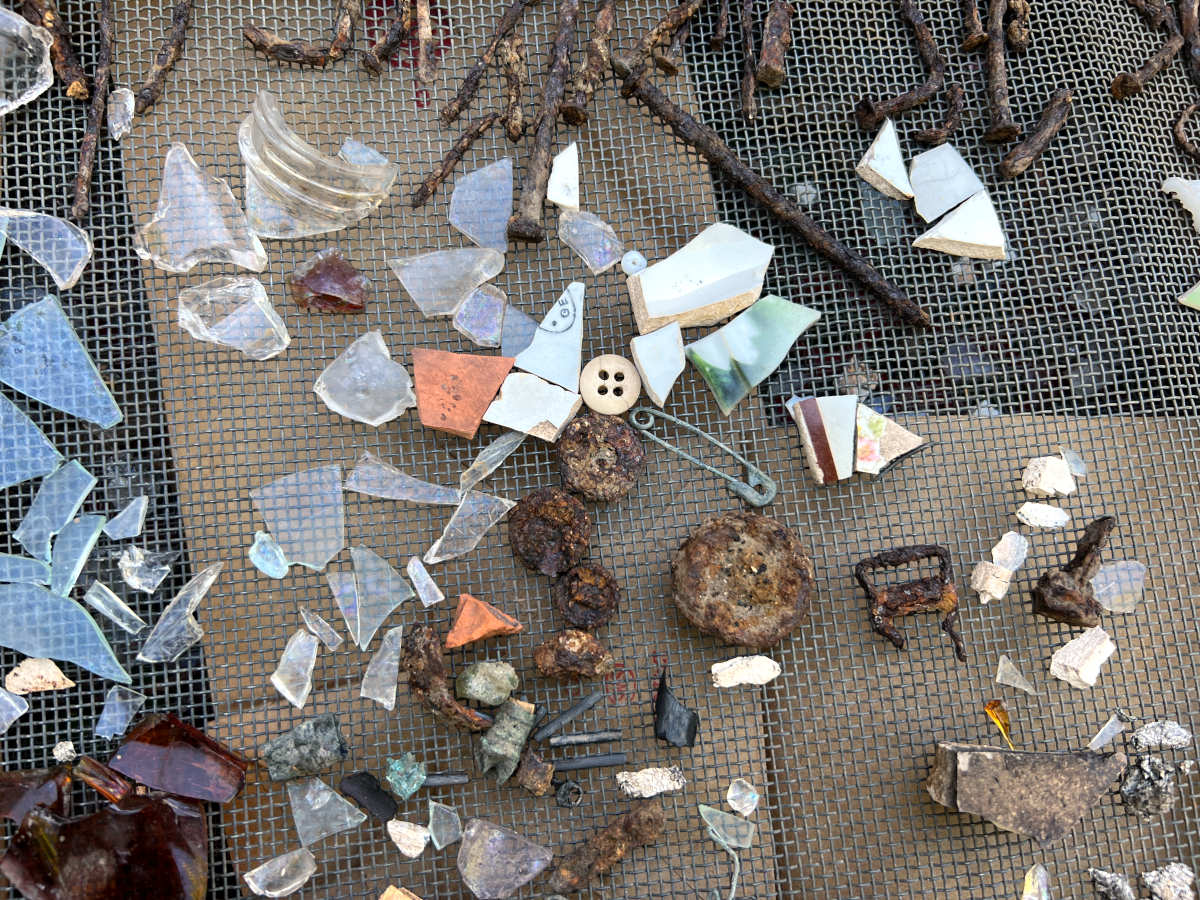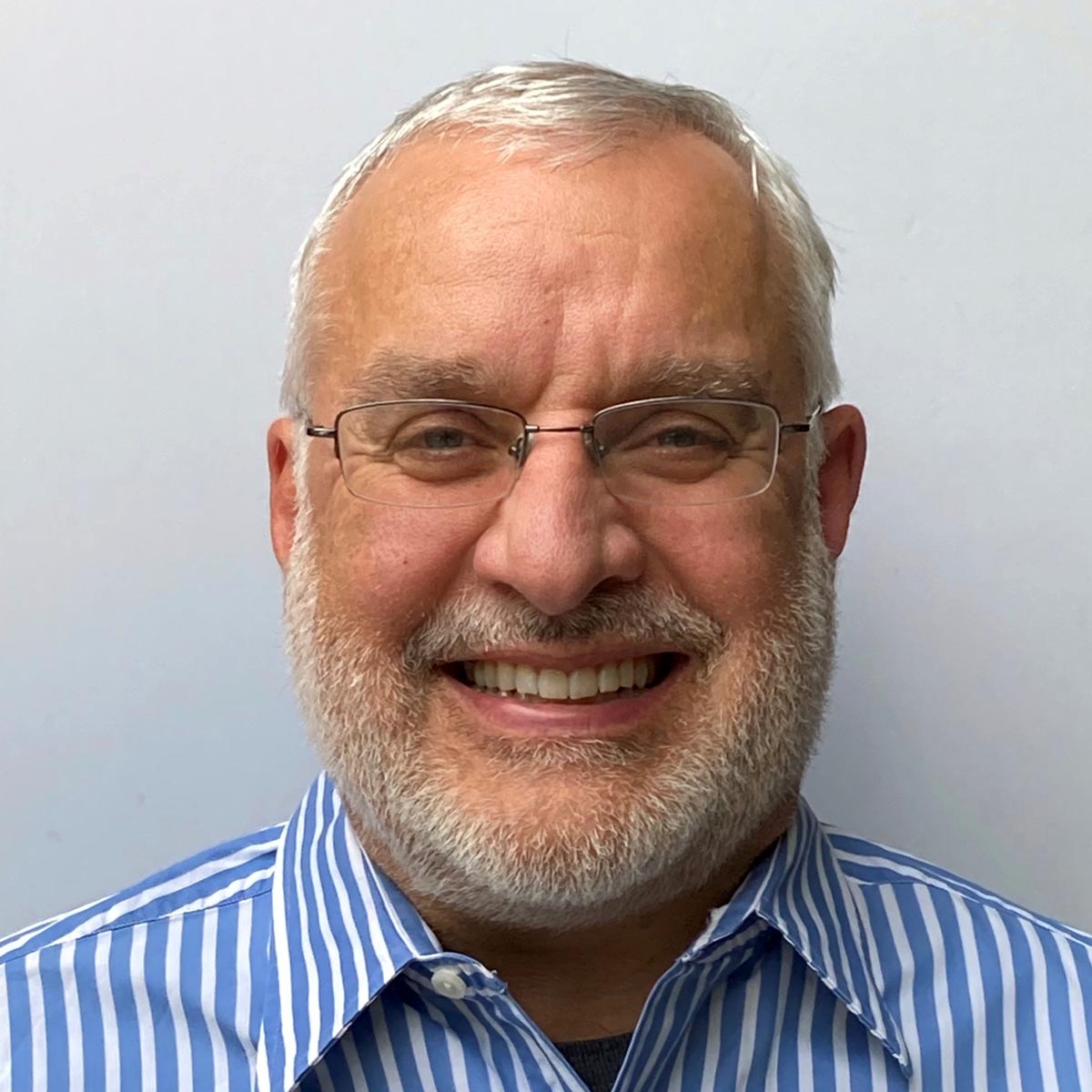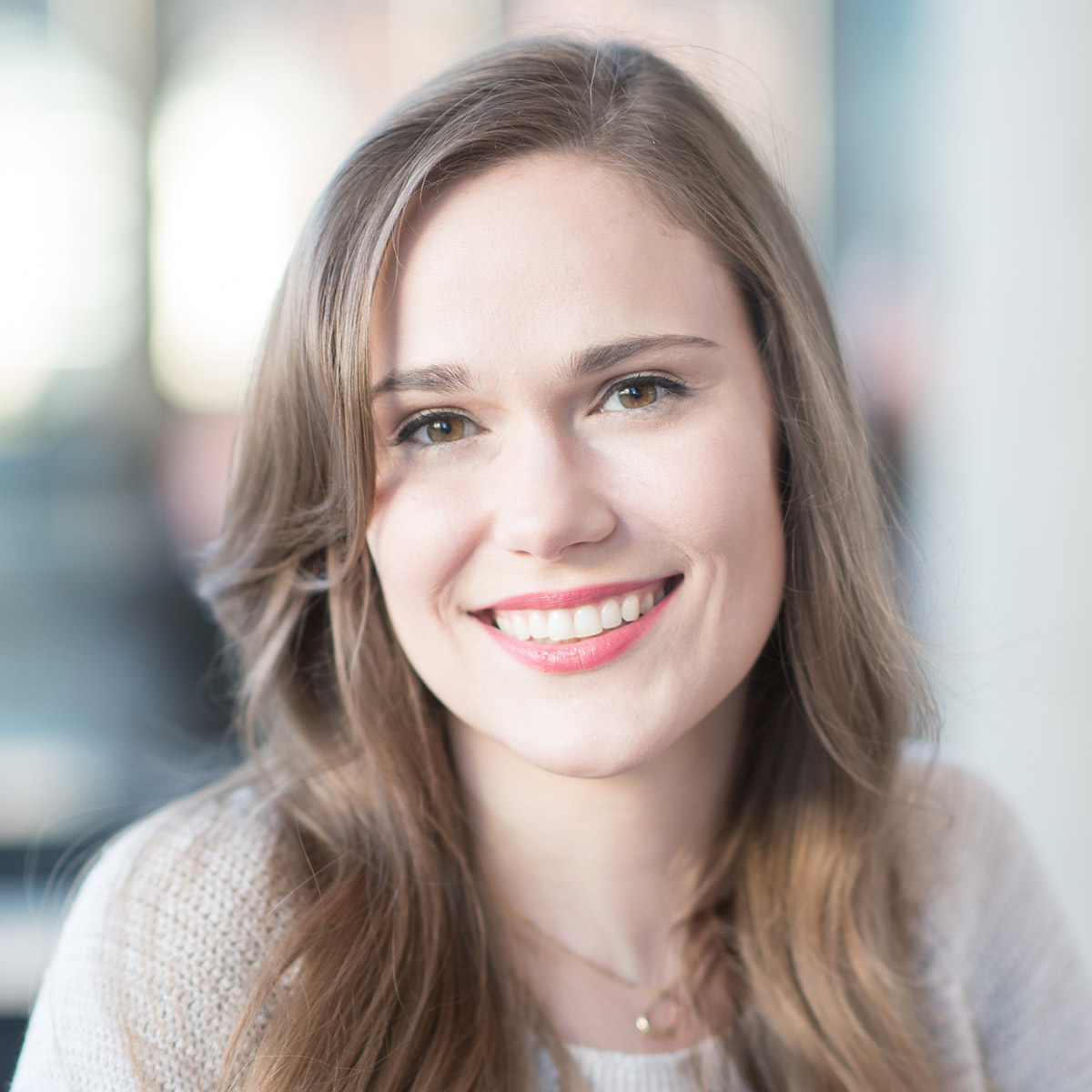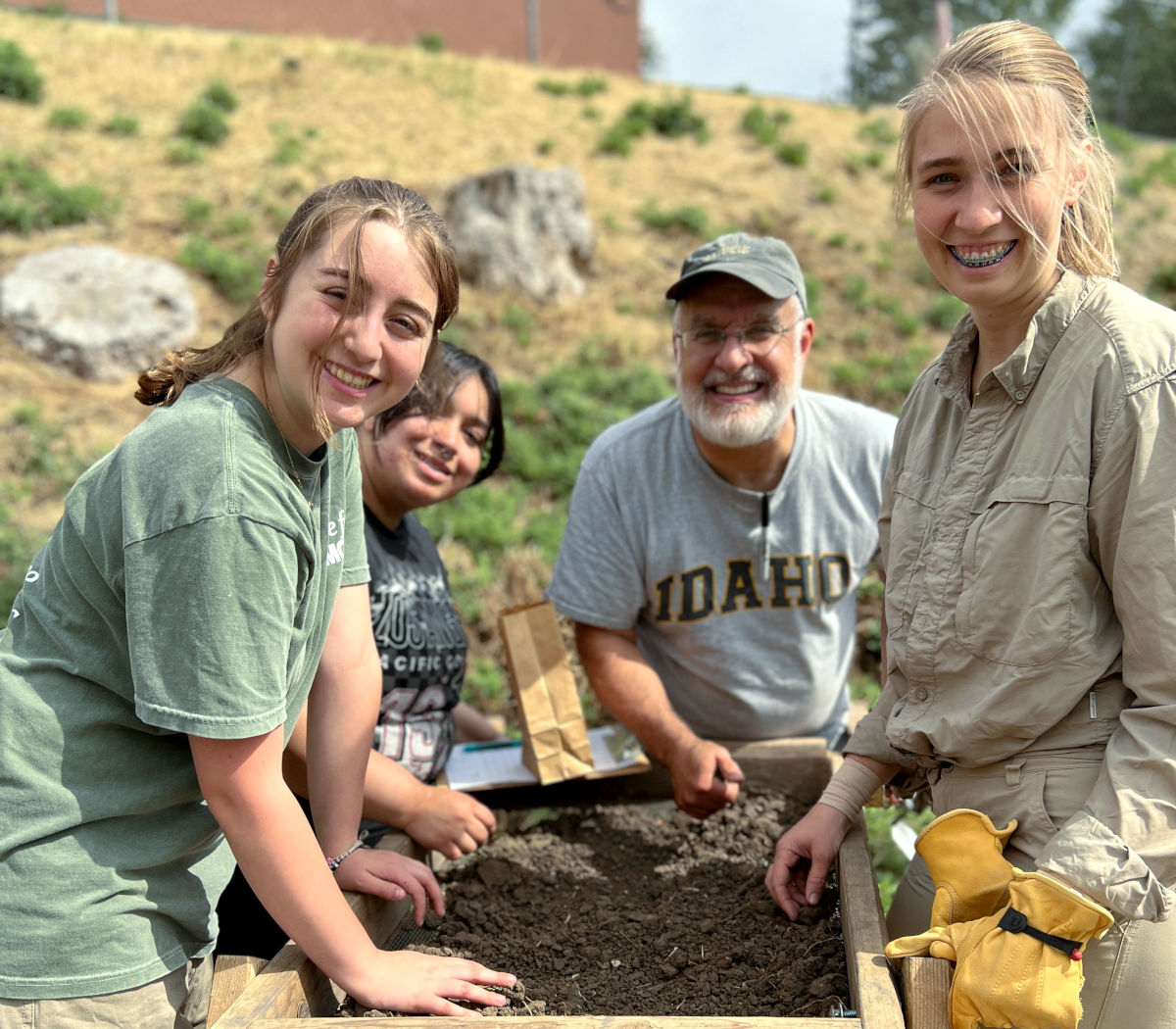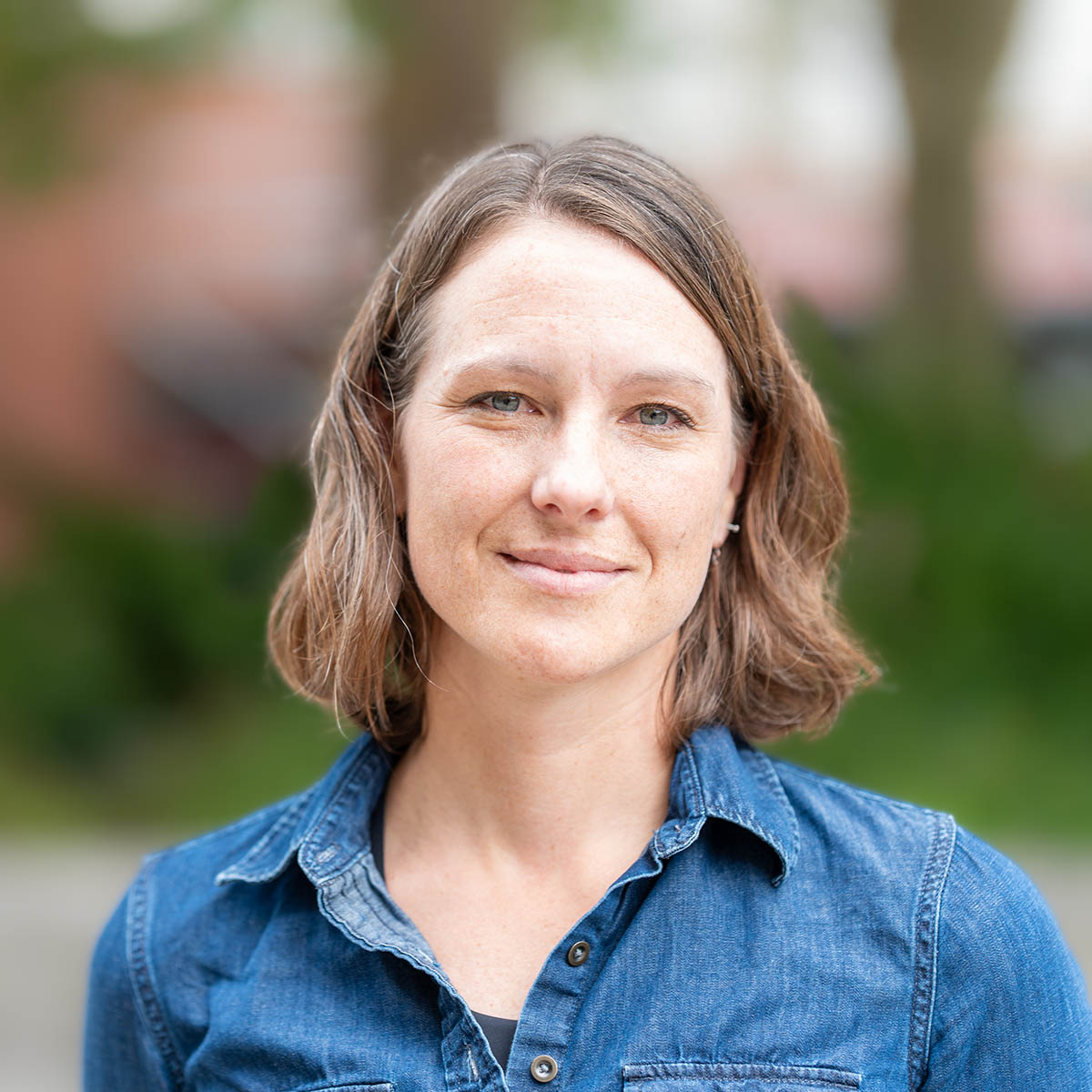Public Excavation
Students Unearth History of Moscow Neighborhood in Fall Semester Field School
Article by Ralph Bartholdt, University Communications
Photos by Katrina Eichner, Dept. of Anthropology
Pieces of a comb, shards of bottle glass, buttons and coins are routinely found at an archaeological excavation on the grounds of Moscow High School, but these small treasures aren’t what makes the eight-week field project unique.
Unlike many expensive, summer travel programs often associated with student archaeological research, the dig, which is part of the University of Idaho’s anthropology curriculum, provides students with hands-on experience during fall semester at little or no additional charge aside from tuition for the three-credit course.
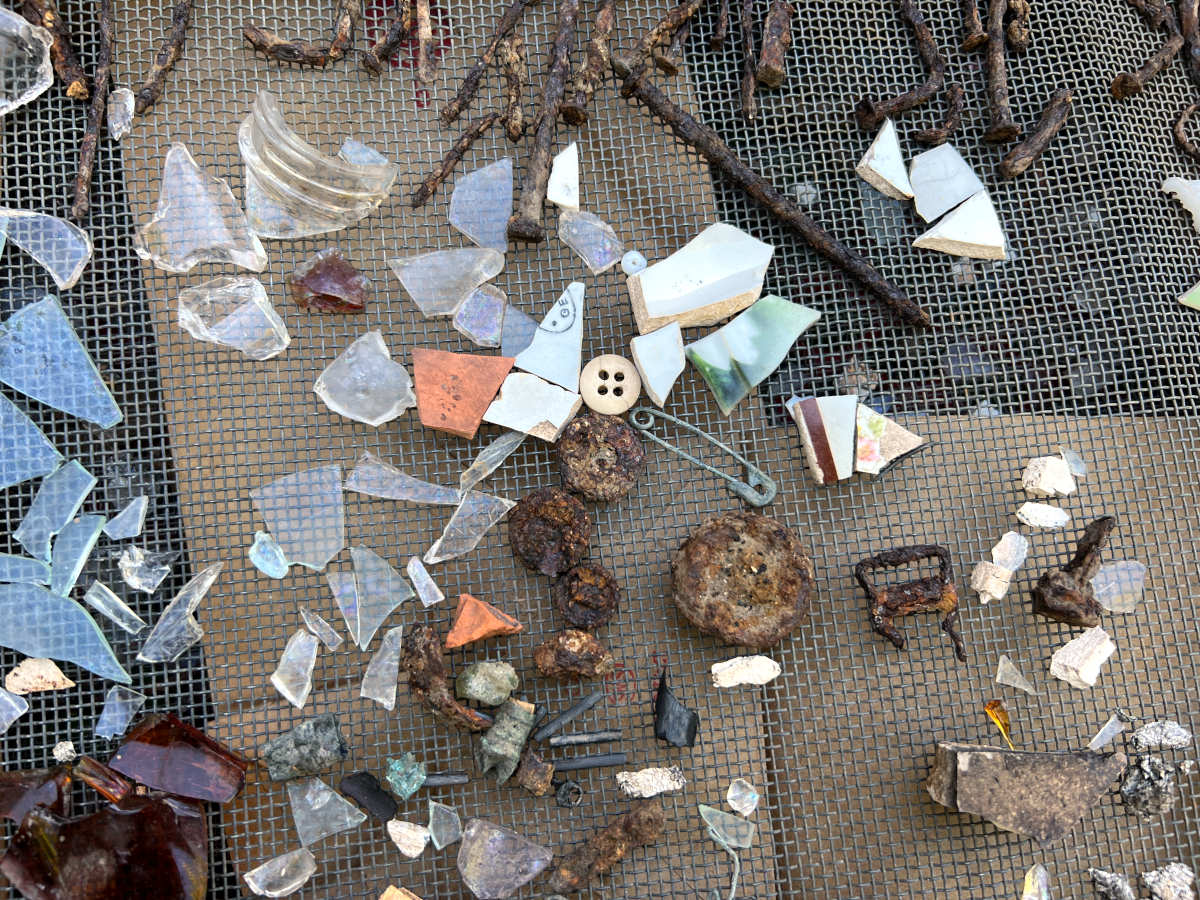
That’s a big reason Bella Taylor participated in the field school. The Moscow High graduate is one of 35 U of I students carving up the earth around the high school.
Yet, there was another, mammoth motivation that caused the archaeology major to meticulously scratch and screen the dirt around the old school. Digging for artifacts in her backyard has provided historical context to her surroundings.
We call it public archaeology because it’s not just students who help with the dig, but members of the community, and anyone with an interest, can join us.Mark Warner, professor
“I was excited to learn about the history of my town and the school I went to,” Taylor said. “I like the public archaeology aspect because working with a lot of people, students and the public honed my skills as I explained the impacts and significance of the projects to the community.”
In the late 1800s the property that includes the high school was a residential neighborhood near what was then central Moscow. It has gone through several iterations allowing archaeologists to explore not just the high school’s emergence but the entire span of the town’s history.
Eighteen students joined in the first season of fieldwork at the high school in 2019. It was an experiment in public archaeology that proved highly successful, leading to a second excavation in the fall of 2023.
Artifacts uncovered onsite become part of the community’s and Idaho’s historical record. That’s not a small contribution, said Professor Mark Warner, who oversees the field exercises with fellow professor Katrina Eichner and research associate Renae Campbell.
“We call it public archaeology because it’s not just students who help with the dig, but members of the community, and anyone with an interest, can join us,” said Warner, a historical archaeologist whose work includes three decades of digging up small chunks of Idaho one excavation at a time.
Although traditional summer field schools provide students with the knowledge they need to succeed in the field, the Moscow site is a great place for entry-level to advanced students to learn about archaeology, or advance their knowledge and skills, without taxing their pocketbooks.
“The model that requires students to dedicate a significant amount of their time in the summer — usually four to eight weeks — and to pay several thousand dollars in tuition and fees effectively eliminates archaeology as a potential career option for many students,” Eichner said. “As archaeologists working in an institution where approximately one third of our students are first generation college students, we are aware of the economic challenges faced by students.”
The dozens of U of I students who earn college credit while attending the local field school don’t pay excursion costs and room-and-board expenses to get dirt under their nails in another state or continent. Instead, they accrue the kind of down and dirty know-how they need to advance toward a degree, without leaving home.
“I’ve only worked on small, one or two-week archaeology projects before this, and I learned that archaeology is really a team effort, you have to work together, especially with a project that’s as sprawling as this one,” said graduate student Massey Jordan.
She plans to incorporate her findings, along with interviews of visitors and community members, into a thesis project that will be shared with the community.
“I want to use the feedback I get to inform an online exhibit, that helps us understand the importance of these public archaeology projects,” she said.
The field work is distinctly an Idaho thing. Warner, Eichner and Campbell have worked together for many years uncovering local history from Idaho City to Sandpoint. Projects have included excavations at Fort Sherman, a former military garrison in Coeur d’Alene and the group has unearthed pioneer history along the banks of the Salmon and Clearwater rivers to provide a more detailed understanding of Idaho’s past.
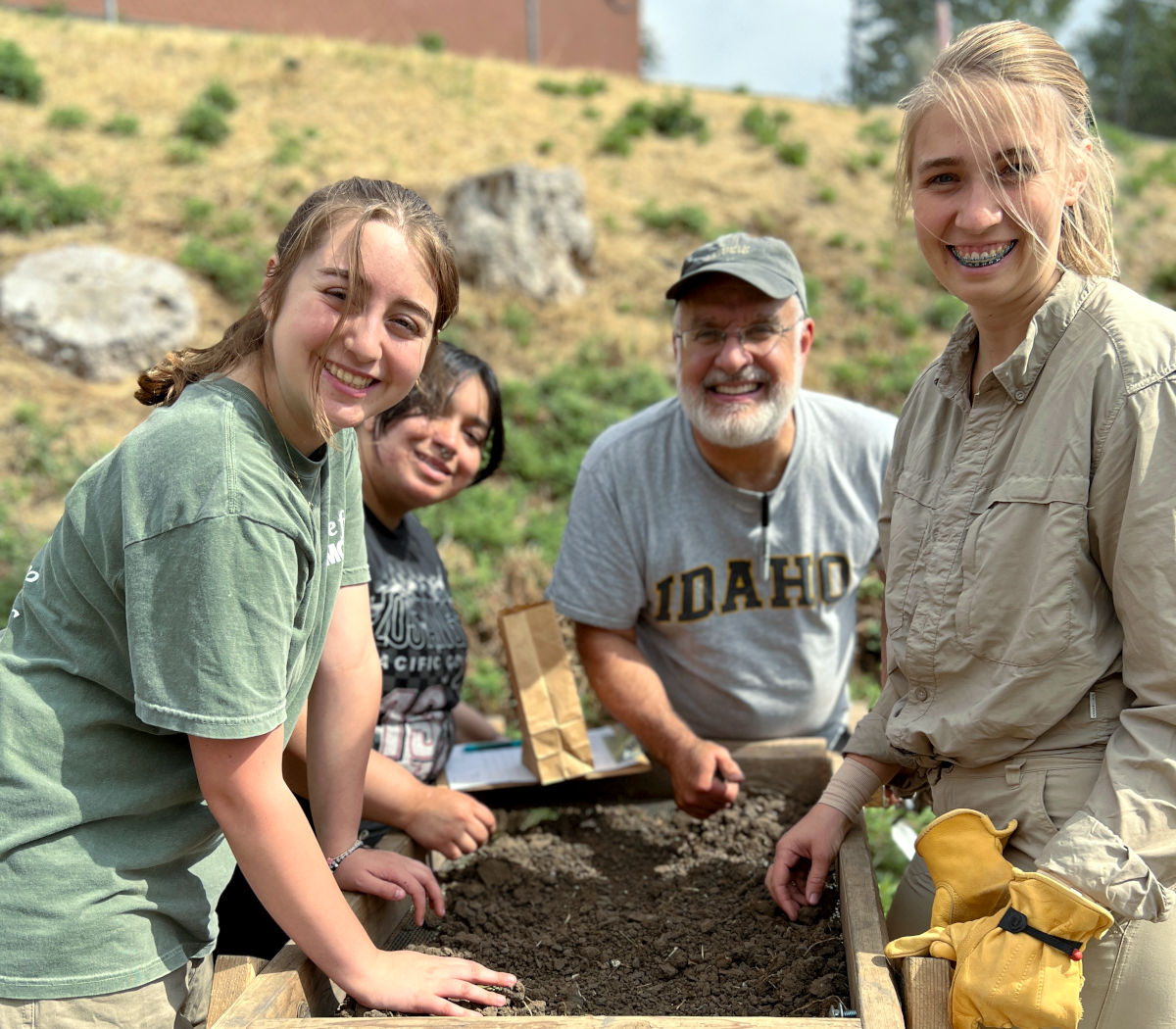
After years of operating traditional summer field schools that required summer tuition and related costs for participants — and which saw very low enrollment — the three archaeologists decided on an option closer to home that would be offered as a course during the regular school year.
The Moscow High dig site and the public archaeology concept was the result.
To find places to dig, participants peruse historical documents such as fire insurance maps dating from between 1891 and 1928. Before the current high school was built at least nine residences occupied the property going back to the nineteenth century.
Buildings, including woodsheds, cellars and outbuildings, once existed at the current school site. Additional research showed Moscow’s first high school was originally built in 1892 in the location of the current high school’s north wing. What is now the 1912 Center was the second high school building on Third Street, while the main building of the current high school was built in 1939.
Knowing the history of the site helps to understand why certain household artifacts dating back a hundred years are buried on the grounds. They include ceramic pieces, rubber duckies, pins, sewing machine parts and lots of animal bones.
Renae Campbell
Terry Abraham and Priscilla Wegars Endowed Assistant Professor of Asian American Historical Archaeology, Director, Asian American Comparative Collection (AACC)
In a trench 3-feet wide and 5-feet long Taylor found two artifacts that interested her.
“One was a small to medium size glass button, purplish to red glass with a cross hatch pattern on the front and it still had that shiny patina,” she said. “The other one I got jazzed about let me practice my identification skills.”
A piece of glass from a bottle had a partial label, she said.
“It was a Pepsi Cola label, and I dated the bottle to 1951,” she said. “Being able to identify and find a date range of an artifact right out of the ground was a very cool experience.”
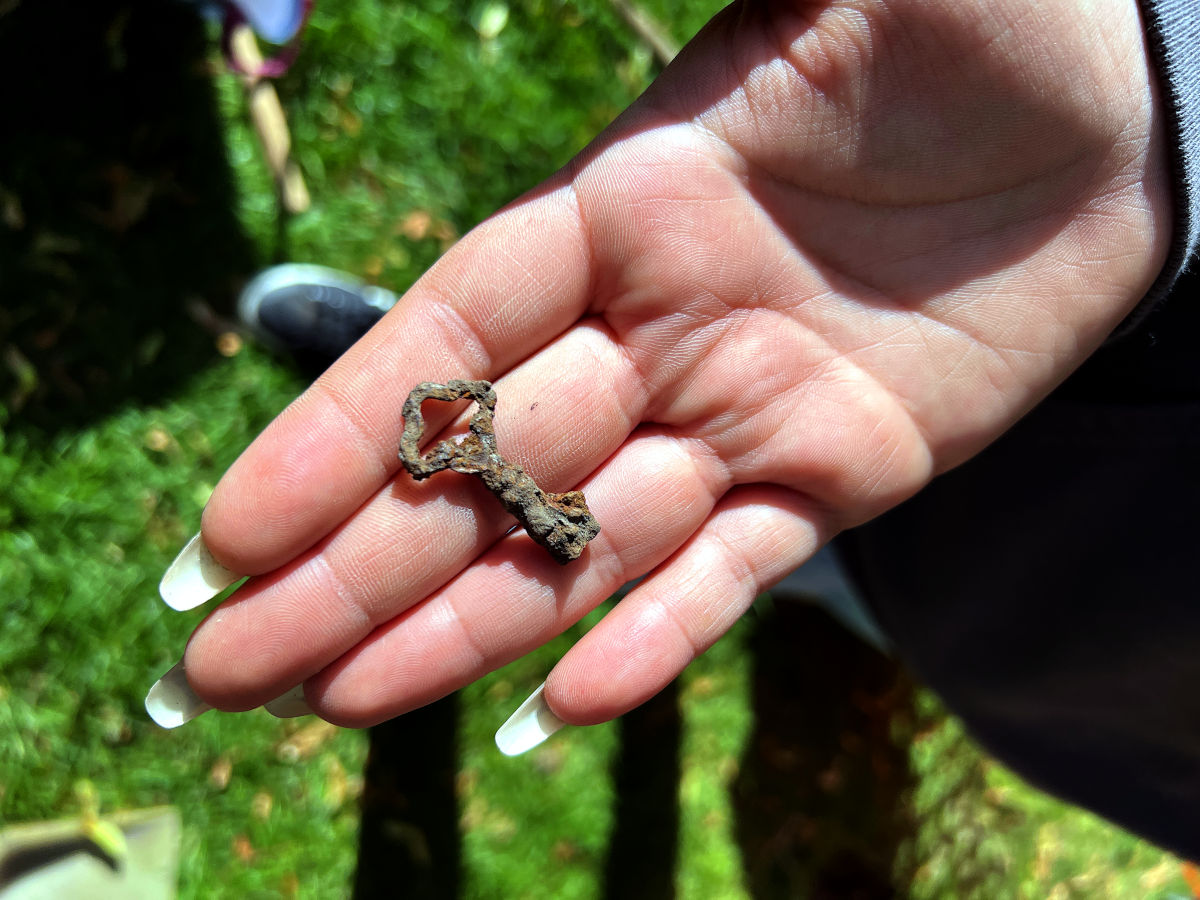
Because many archaeology field schools are a luxury that occur primarily in summer when students need summer jobs or paid internships, the autumn-semester school near campus is the perfect opportunity and it shows. Enrollment has doubled in past years.
“This fall semester field school is really popular and regularly, dramatically out-enrolls all of our previous field opportunities,” Eichner said.
Published April 2024.







